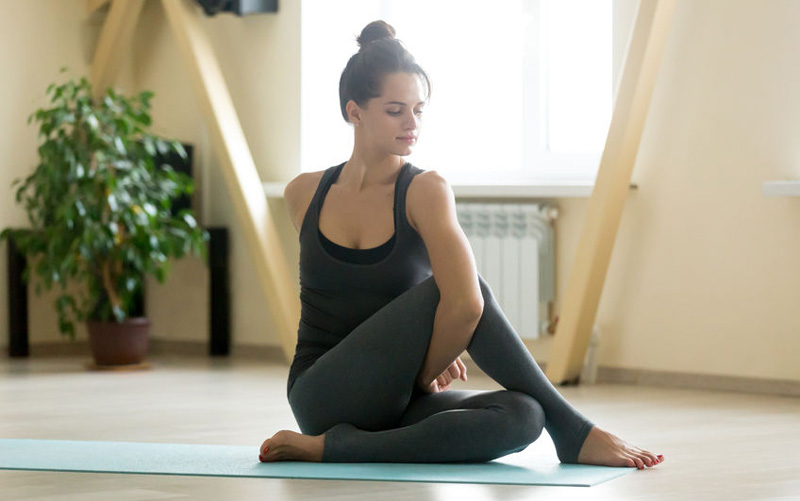NAFC NewsBlast - March 2018 | Ed 1
Hips & Twists - How to Safely Twist, Part 2
Written by: Tammy LeBoss - FitPro Foodie

Copyright: Aleksandr Davydov / 123RF Stock Photo
How to Twist
Indian practitioners of yoga typically squatted and sat cross-legged in daily life, and yoga poses were an outgrowth of these postures. Now modern-day yoga practitioners sit in chairs all day and rush into studios a couple of times a week. They strain to twist themselves into more difficult postures despite their lack of flexibility and other physical challenges.
Twists can help slumped-back postures and provide an abundance of benefits. Twisting poses can help restore our spine’s natural range-of-motion, cleanse our organs, aid digestion and stimulate circulation. Twists also provide structural benefits to the musculoskeletal system, and improves focus and awareness.
But, before plunging your students into deep twists, keep in mind these key anatomical points in a basic Seated Twist:
Elongate the spine; a slumped-over posture significantly limits spinal rotation. Ground your sitting bones and draw the spine straight up the crown of the head.
Make sure that your spine is perpendicular to the seat, avoid listing to the side, front nor back.
Remember that each section of the spine has a different rotational mobility. The cervical (neck) vertebrae, for example, are the most mobile in twisting.
Because the 12 thoracic (mid-back) vertebrae have ribs attached, they can’t twist as freely as the neck vertebrae.
And because of the orientation of the lumbar (lower spine) facet joints, the rotation of these five vertebrae is the most limited.
Pro-Tip
To ensure that you don’t over twist in the more mobile parts of your spine, begin your seated twist by bringing your awareness into your lower back and beginning the twist from there. Allow the twist to gradually unfold and never force a twist to occur.
Twists should be entered and exited methodically with care and caution. Very flexible participants may tend to “throw” themselves into deep twists, exposing them to greater risk of injury. On the contrary, stiffer participants may try to force themselves into a deep twist that they are not yet ready for. All twists tend to collapse the ribcage to some degree. This is because the thoracic spine has a limited capacity to rotate, being bound by the ribs. Use the accessory muscles of respiration to counteract the tendency. Begin by drawing the shoulder blades toward the midline and stabilizing them there. Then expand the chest by engaging the pectoralis minor and serratus anterior muscles.
Pro-Tip
For optimal safety, all twists should be accessed from a neutrally rotated posture. Prepare for deep twists with a neutralizing pose such as a Sphinx pose, and Standing and Seated Forward Folds where the spine is in a symmetrical shape.
Here are a few more key points to remember when transitioning into twisting:
- Square the hips which should not revolve with the torso and upper body (NAFC ANSER™)
- Avoid leading with the head
- Keep the cervical and thoracic spine in line
- Never hold your breath while twisting
- Keep eyes in line with the direction of twist
Challenge Your Balance with a Standing Twist
Once the basics of alignment are realized, challenge your balance slowly with control with Revolved Half Moon pose. Apply the following:
- Engage a solid grounding leg that is the same in Mountain pose
- Keep the grounding leg straight yet unlocked
- Direct the tailbone toward the lifted heel
- Lift the sternum and draw the front ribs inward
Learn to fully reap the physiological and structural benefits of twists, and you might also gain its centering benefits. Learn more about how the layers of muscle and bone revolve on a deeper level, and gain the ability to stay centered as the world jiggles around you. Learn more about how to safely and effectively enter and exit deep twists such as Revolved Triangle, Crescent Lunge, Chair, Crow poses and more. Always apply safe sequencing and be prepared to offer modifications as every ‘body’ is different.
Written by: Tammy LeBoss - FitPro Foodie

